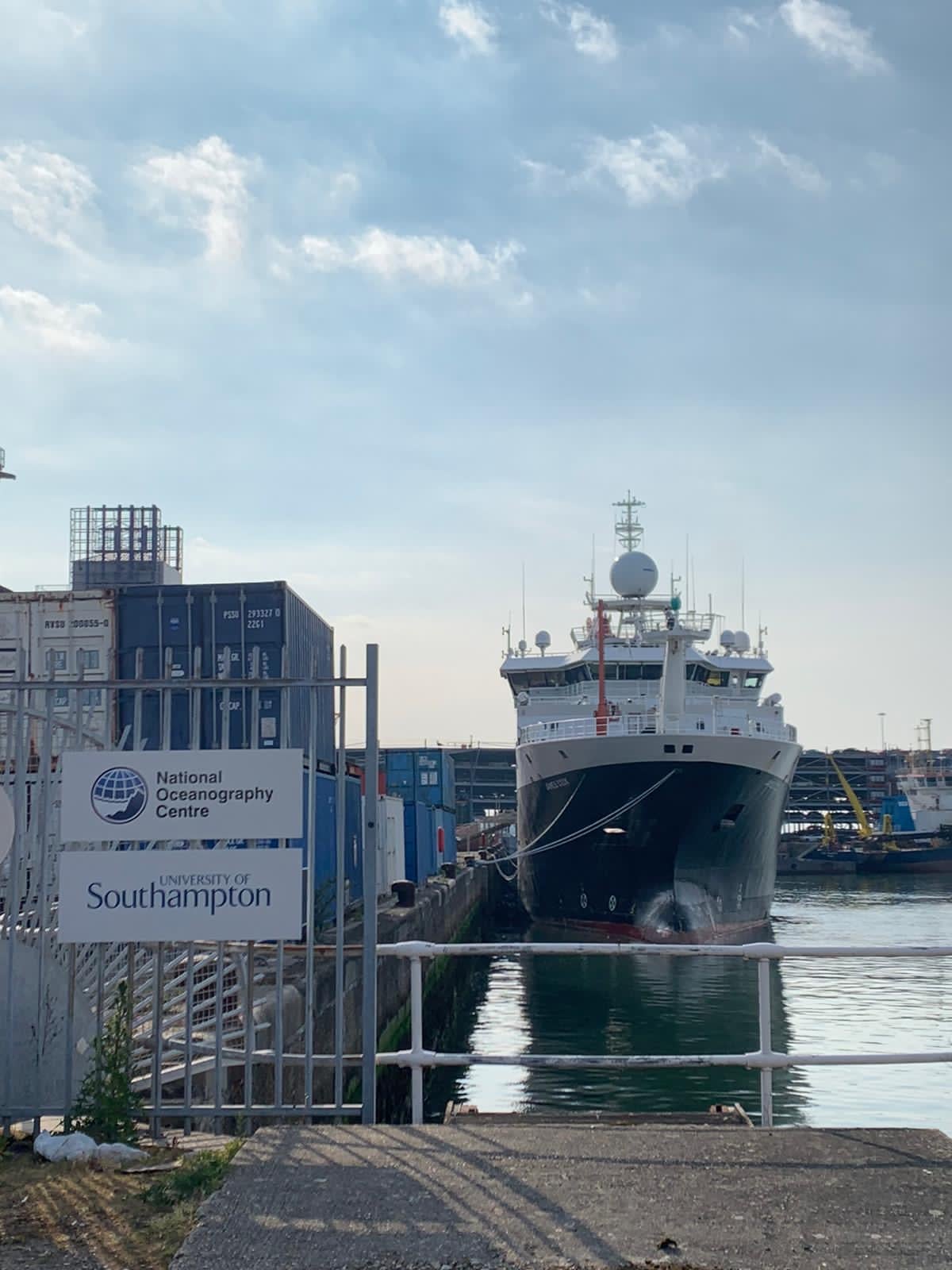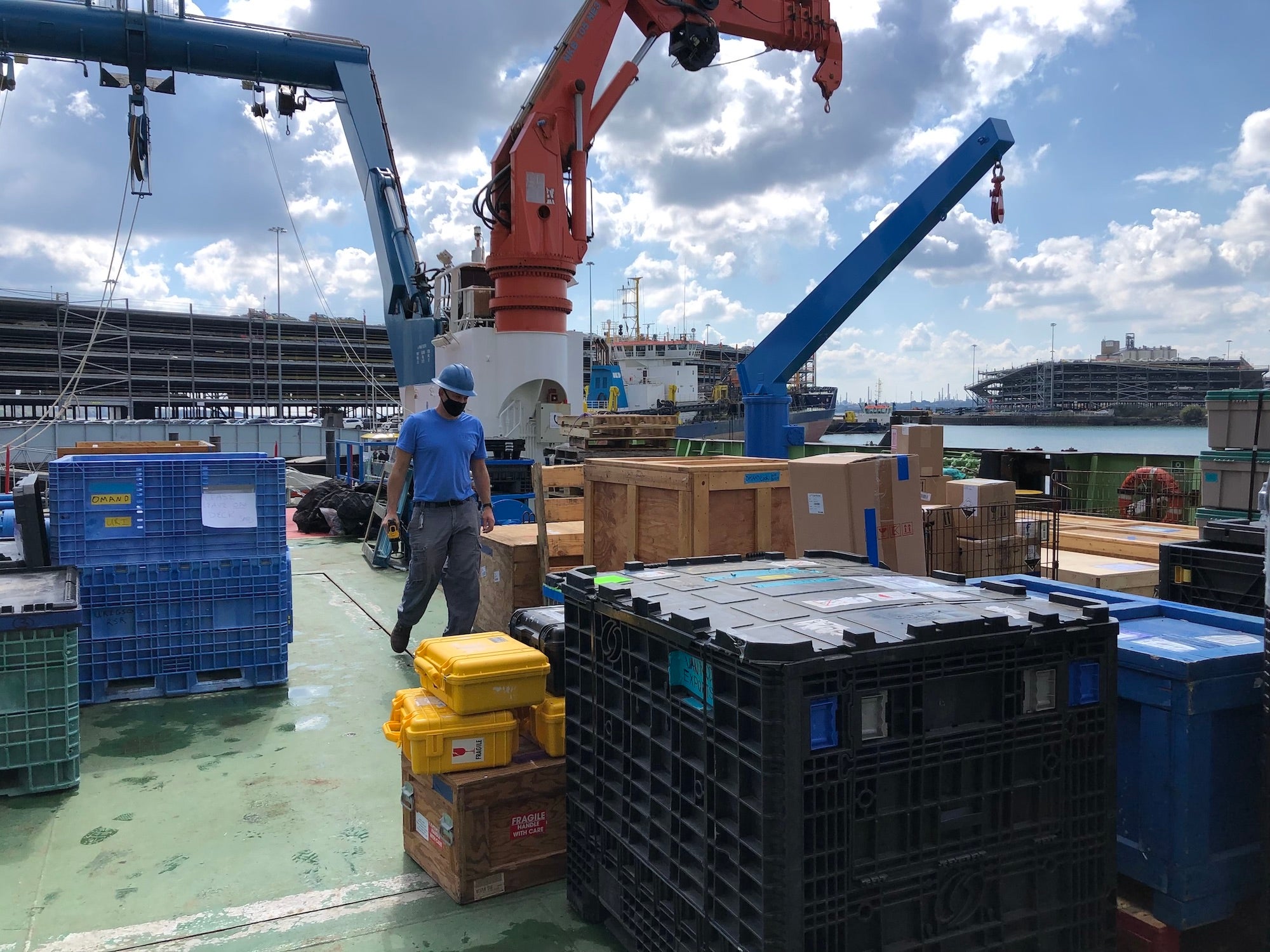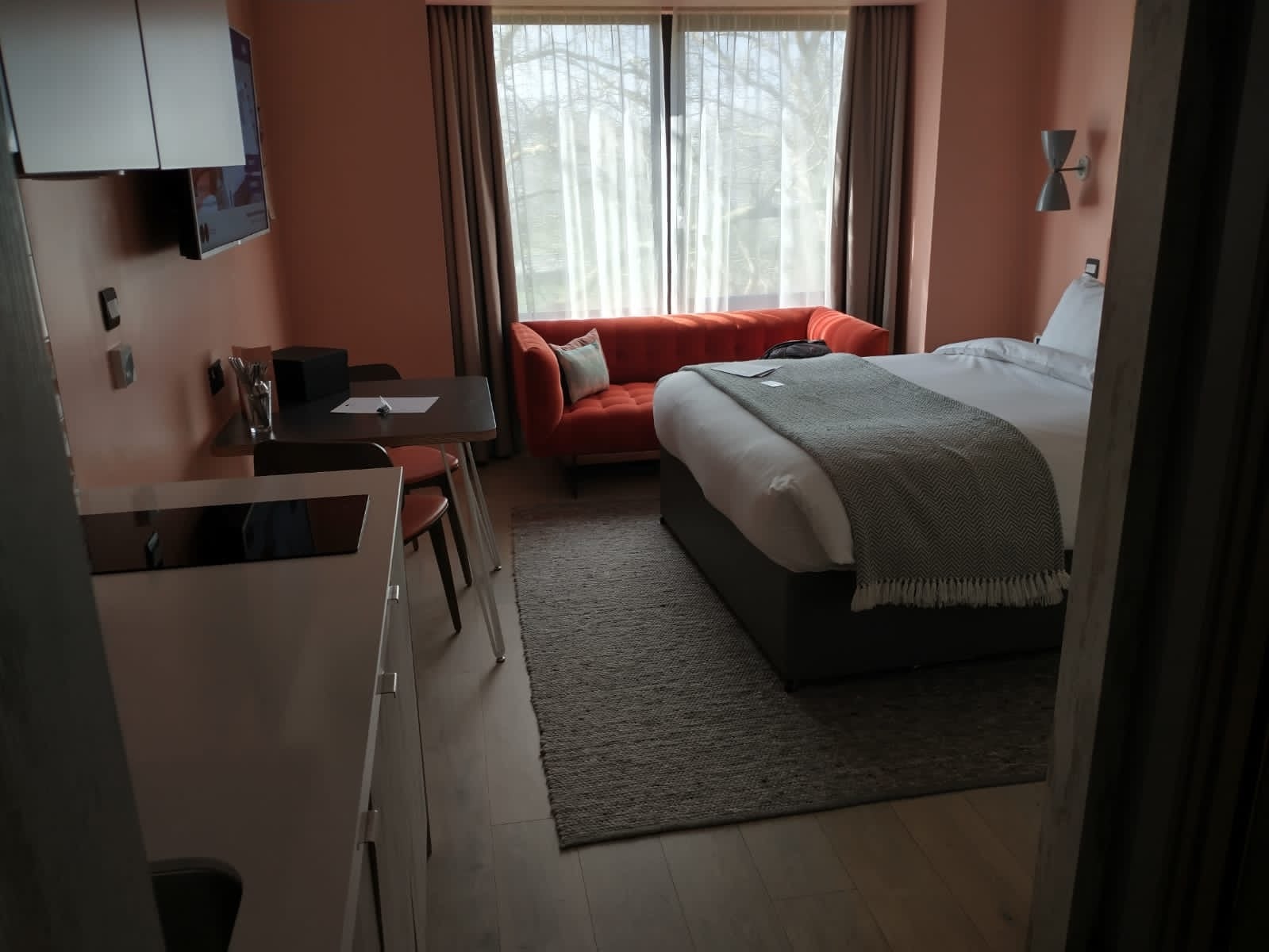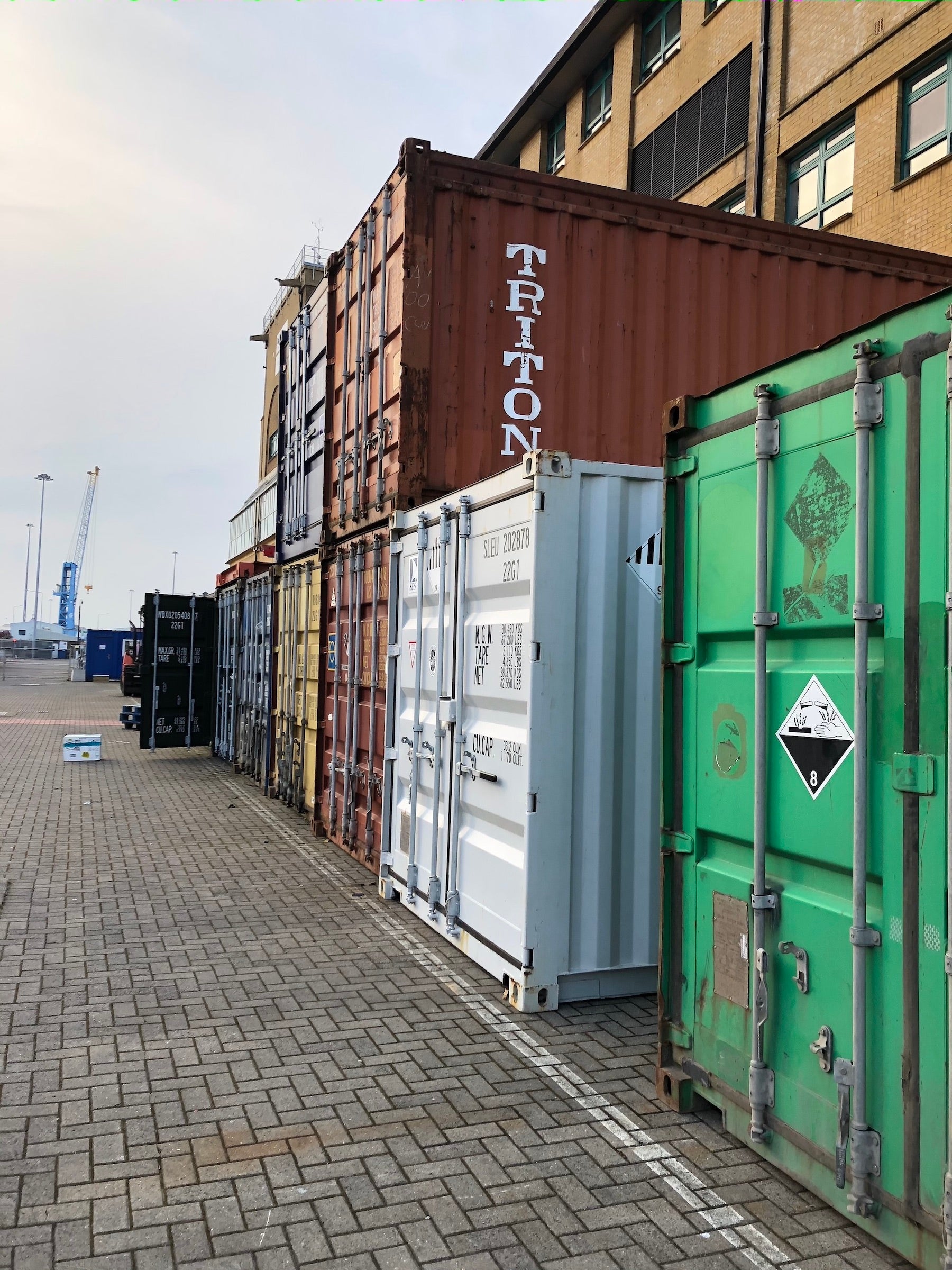May 11, 2021
This is the first in a series of posts by GSO Ph.D. candidate Diana Fontaine who is currently in the North Atlantic for the NASA EXPORTS project. The full series is available here.
Less than a month before the scheduled departure, I found out I would fly across the Atlantic to take part in a month-long research cruise during a global pandemic. Of course, this also meant a two-week quarantine. I felt many emotions but the most prominent one was excitement because after all, what’s better than a month at sea?
This month-long research cruise is the second field campaign for the NASA EXPORTS project. EXPORTS stands for Export Processes in the Ocean from Remote Sensing and it is a NASA-funded project that aims to develop a predictive understanding of the ocean’s carbon cycle. In particular, we are investigating the export and fate of net primary production from the surface ocean to the ocean’s interior. The first research cruise for the project occurred in the ocean desert of the North Pacific in 2018, but now we are in the much more productive North Atlantic Ocean—fingers crossed we will see a bloom of large phytoplankton cells called diatoms.
The research cruise was set to leave out of Southampton, England so first I had to fly to the United Kingdom. This was my first flight since the beginning of the COVID-19 pandemic, which I will say felt a bit odd. But once we arrived in England we met up with the rest of our fellow scientists and made the trek to Customs, where we presented about 10 documents to the border patrol agents.
Prior to boarding the Royal Research Ship James Cook, we had to quarantine for two weeks in a Southampton hotel. I received a phone call from England’s National Health Services during which they questioned me about my isolation and COVID-19 testing plans. Once I reassured them about the plans for five tests in two weeks, they seemed satisfied and wished me well. After being stuck inside for the first five days, we could go outside, wander about and feel the sun on our faces. What a relief. Finally, after two weeks and five COVID-19 tests, we were ready to board the RRS James Cook.
There are three ships that will be in the same region of our study site: the James Cook and RRS Discovery, both sailing out of Southampton, U.K., and RV Sarmiento de Gamboa sailing out of Vigo, Spain. While scientists on Sarmiento de Gamboa are part of the Ocean Twilight Zone project led by the Woods Hole Oceanographic Institution, we will all work together and share data to gain a better understanding of carbon flux, a topic that is especially important now in the face of climate change.
Upon boarding the James Cook, we were greeted with pastries and tea. However, afternoon tea-time only lasted a short while because we had to sort out the gear that patiently waited for us on the dock in the many shipping containers that departed GSO back in March. Ship mobilization was very hectic. Everyone had to figure out the best placement for their gear and ensure it was well secured in case of high seas. One group even had to build a custom lab to store their sediment traps for processing. We lucked out with a great crew who were so helpful with our many questions and requests. Once we completed the 3-day mobilization, it was go time! Everyone was eager to leave port and get on with the science and life at sea.
Joining me along for the ride from GSO over the next few weeks are Ph.D. student Erin Jones, postdoctoral researchers Heather McNair and Laura Holland, and technician Pat Kelly. Additionally, professor Bethany Jenkins and postdoctoral fellow Sarah Lerch are not too far from our line of sight on the RRS Discovery.
Stay tuned for more updates while we’re bobbing around and doing science in the North Atlantic!




